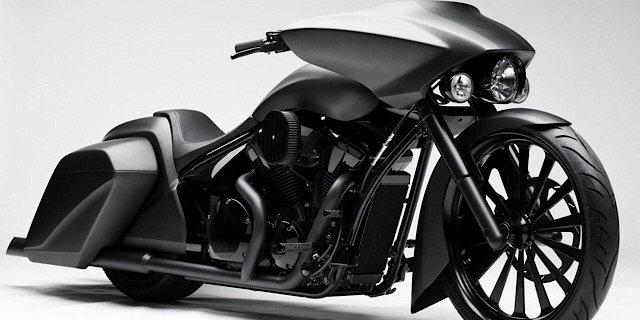Ready to hit the road on your brand-new motorcycle? You’ll need a few accessories first. Riding a motorcycle can take some getting used to. You’ll need to learn how to stay balanced on the bike while navigating stops and turns. Motorcycles handle differently than cars. They also come with less protection. There’s a good chance you will fall at least once as a beginner. Even the most experienced riders know better than to hop on a motorcycle wearing little more than shorts and a T-shirt. These accessories make it easier to learn how to ride, and they just might save your life if you get into an accident so you’re free to ride another day.
Full-Face Helmet
Every rider needs a quality motorcycle helmet, regardless of how much experience they have under their belt. Wearing a helmet isn’t just encouraged — it’s the law throughout most of the U.S. If you are under the age of 18, the law requires you to buckle up. Several states, including New York, Texas and California, also impose penalties for not wearing a helmet while riding.
Not all helmets are the same. New riders should strap on a full-face helmet for maximum protection on the road. The helmet covers your entire head and face — arguably the most important parts of your body — with a visor to block the sun. The helmet should fit comfortably over your nose and mouth so you can breathe easily. The strap is adjustable to help you find the perfect fit.
If you choose to wear a half-face helmet or skull cap that only covers the top of your head, you need to wear goggles to protect your eyes.
Bluetooth Headset
If you think wearing a full-face helmet will make it hard to communicate on the road, think again. Having a helmet that wraps all the way around your head actually makes it easier to use a motorcycle Bluetooth headset. The device wirelessly connects to your cell phone or GPS to help you stay connected to your companions as you navigate the road. Just speak into the device to establish a connection to your fellow riders and the headset will take care of the rest. The intercom clips right onto the bottom of your helmet to keep the receiver in range. You don’t have to lean forward or physically interact with your device to have a conversation.
Find a headset that uses dynamic mesh communication when riding with more than one other person to stay connected as a group. Traditional Bluetooth devices can only connect to one other device at a time. That means the leader will need to connect to the next closest person and so on until the chain is complete. If one person falls out of range, the entire chain breaks apart.
DMC provides a more stable connection by forming a direct link between you and every other person in your group. The helmet communication device connects with up to 15 riders at a time. You don’t have to reset the connection if someone falls out of range. The device automatically resets to keep everyone on the same page.
Riding Gloves
You’ll need more than just a helmet to stay safe while riding. It’s best to cover as much of your skin as possible, especially when traveling at high speeds. Your clothes will block the sun and the wind so you don’t get windburn after a few hours. Put on a durable jacket, a thick pair of jeans and a strong pair of boots before hopping on your bike. Last but not least, find a strong pair of riding gloves with built-in grips to help you stay in control of your motorcycle.
Your hands will likely be your first line of defense if you get into an accident. Our first instinct is to put our hands up in front of our faces when we fall to the ground. But asphalt and tarmac are extremely coarse and abrasive and touching the ground during a fall can lead to second-degree burns due to friction. Your gloves will protect your hands during the impact so make sure they will stay on in every situation.
Knee Pads or Guards
Falls happen. They are just part of the experience. Keep your joints safe during a fall by wearing knee pads or guards. Your knees will be one of the first things to hit the pavement when you go down, so add another layer of protection just to be safe. The pad minimizes scarring and bruising to help you get back up as soon as possible after a fall.
Kickstand
Lots of new riders forget to add a kickstand to their bike considering most makes and models don’t come with built-in stands, but it’s the best way to hold up your motorcycle when you need a break from riding. Avoid leaning your bike against a pole or wall or you will end up damaging your new prized possession. The stand needs to be able to support the overall weight of your bike, or the whole thing could come crashing down.
Don’t be intimated by the open. Use these motorcycle accessories to start your journey off on the right foot.
Follow Technoroll for more!





